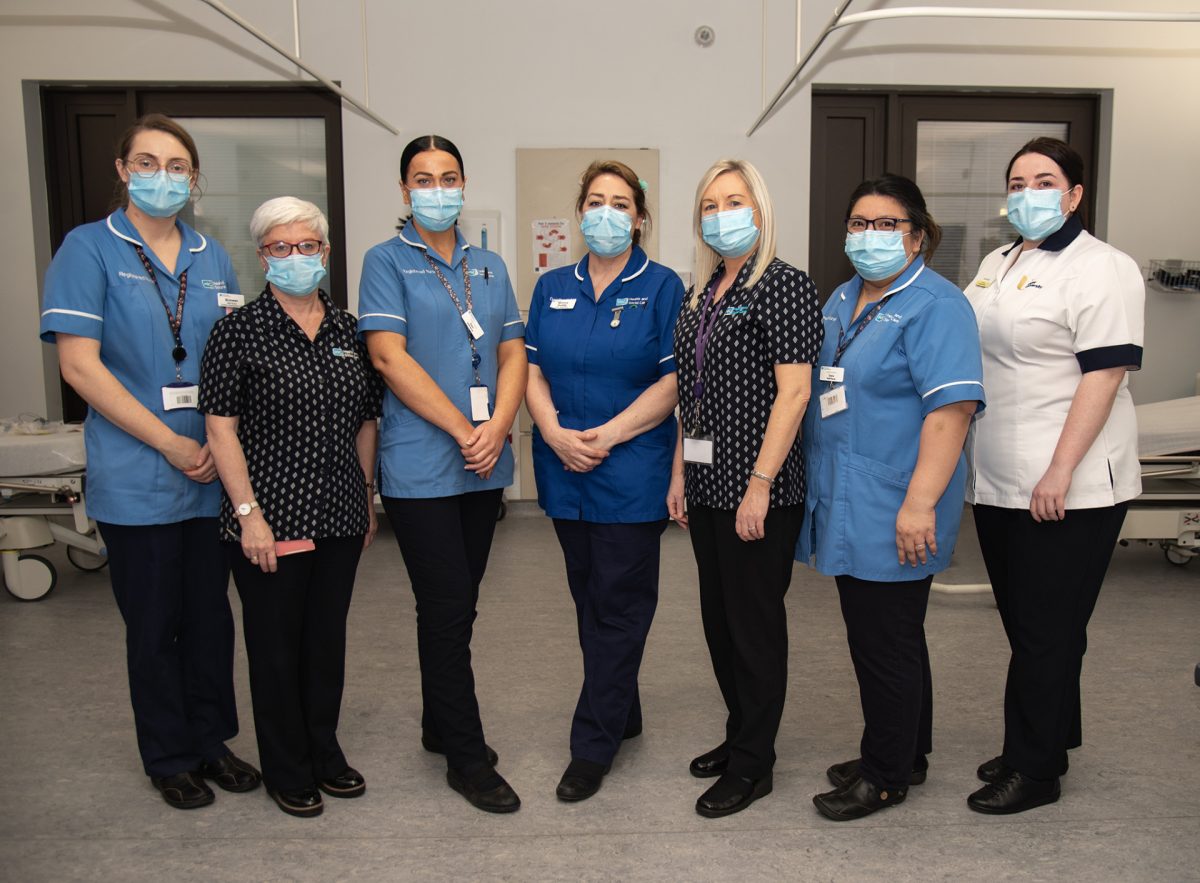In the last 50 years, the world of medicine has changed dramatically.
New means of testing have enabled us to diagnosis conditions that were previously impossible to identify.
Pharmaceutical development has birthed new drugs capable of curing once-fatal illnesses.
And, through a mix of research and education, most of us now have a healthy understanding of the relationship between behaviour and wellbeing.
However, despite advancements in medicine, technology and knowledge, some illnesses still prove difficult to eradicate.
Refusing to yield to the march of modern medicine, cardiac conditions remain among the most common causes of death today, both at a local and global level.
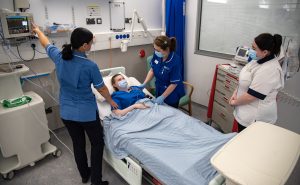
While they can strike at any age, they are most likely to affect people in their middle and later years.
When a person suffers a cardiac episode, time is of the essence. Being attended to quickly can be the difference between life and death.
This is why the Cardiac Assessment Unit in Omagh Hospital and Primary Care Complex is so important.
Seeing around 6,000 patients every year, it has saved countless local lives since it was established in 2009.
This week, as part of an ongoing series investigating what really goes on within Omagh Hospital and Primary Care Complex, the UlsterHerald paid a visit to one of our hospital’s most crucial departments.
Every week, hundreds of people attend Omagh’s cardiac assessment unit.
Some are referred for precautionary tests by their GPs, while others, concerned by their shortness of breath, tightness of chest, or palpitating heart, rush in off the street, in acute need of life-saving treatment.
To get a better grasp of exactly what goes on here, we were given a tour by one of the most senior nurses on the ward, Monica Duddy.
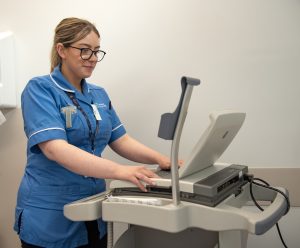
“My name is Monica Duddy, and I have been working in cardiology for most of my life,” she began, as three of her colleagues stood nodding along, supportively.
“After Omagh Hospital closed acute admissions, the Cardiac Assessment Unit was set up back in 2009.
“So, I suppose we have been up and running for 14 years, now,” reflected Monica.
Omagh’s cardiac assessment unit, explained Monica, is unique in Northern Ireland.
“This unit provides a 24-hour service, but what makes it remarkable is the fact that it is nurse-led,” said Monica.
“In that respect, it is the only one of its kind in Northern Ireland.”
Detailing the specialist personnel that allow the unit to function so effectively, Monica said, “There is usually one band six nurse, and a few band five nurses on every shift, and we also work closely with a number of cardiologists.”
Visiting consultants, Monica elaborated, come to the unit four days a week, and, when required, Monica and her colleagues can contact consultants in Altnagelvin.
“We just lift the phone and ring Altnagelvin when we need them,” said Monica.
“All our consultant cardiologists are a great support, and without them this place wouldn’t and couldn’t happen.”
This is a life-saving unit.
Patients often come here with their lives at imminent risk.
We asked Monica to explain exactly who comes here, and what the unit does to help them.
“We see patients with chest pain, shortness of breath, palpitations, people who are feeling faint, people that have had a faint, or people who have a clot in their leg,” said Monica, without a pause.
“That is during normal working hours, Monday to Friday,” she added.
“When a very sick patient arrives, we do their heart tracing, and have them in a bed before we even know their name,” said Monica.
Some of the ward’s sickest patients walk in off the street.
For these people, there is virtually no waiting time.
“When a person comes to us with chest pains, they are often presenting with a heart attack,” said Monica.
“Immediately, we seek to get them stabilised, give them the medication they need, provide pain relief, and then we get the emergency ambulance ready for transfer to Altnagelvin.”
What Monica and the rest of Omagh’s cardiac team do often means the difference between life and death.
“There are people who have come in here during a cardiac arrest, there heart has stopped, and we have had to shock them back to life again.
“That has happened more than a few times,” she said.
“Recently, two nurses on night duty had somebody call in at four in the morning with their heart racing at nearly 200bpm, and they had to shock their heart into the right beat again.
“That was on their own, no doctor beside us, they did it themselves,” said Monica, proudly.
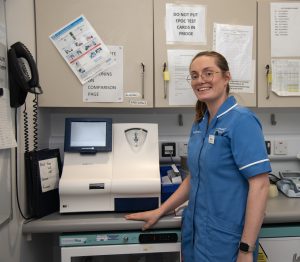
But not everybody that is seen in Omagh’s cardiac unit needs emergency treatment.
“Many people come in very worried with chest pains.
“However, most of the time we simply do some tests, check their results, then send them home with the all clear, their fears and worries eased.
“This is why the unit works really well,” said Monica. “It is local people being seen locally, and a lot of the time it is a matter of doing tests, and giving them the simple and accurate reassurance they need.”
In the early days of Omagh’s cardiac unit, Monica explained, few knew about it.
However, it is now not only widely-known locally, but people from other trust areas also appreciate and respect its reputation.
“Sometimes, we have people coming from as far as Dungannon, Fermanagh and Derry,” said Monica.
While the staff do not recommend patients travelling to Omagh – instead of availing of services nearer their homes – it is, nevertheless, testament to the name Omagh’s cardiac unit has made for itself.
“People hear that it is such a quick and effective service, and they do not have to go through casualty,” said Monica.
“That is what everybody wants.”
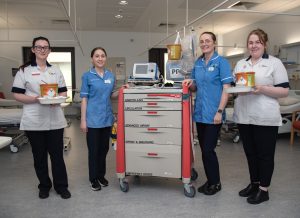
Before concluding our tour, Monica turned to us and explained why she believes the cardiac unit works so well.
“We have a great team of specialists, who are all passionate about what they do, and that is shown in our low turnover of staff,” said Monica.
“I live in Derry and have been travelling to Omagh for over 20 years, and there really is nowhere else like this place in Northern Ireland.”
Omagh’s Cardiac Assessment Unit recently won an award for the services they provide, and around the same time received a runner-up recommendation in a ‘team of the year’ award from the British Heart Foundation.
“We need to work well together, to understand each other and each other’s capabilities.
“Though we might be different bands, every girl that works here is fantastic at what they do,” said Monica.
In one final demonstration of the work that is done in the unit, Monica recalled a recent incident in which a patient was rescued from the brink of death.
“A few weeks ago, one Saturday afternoon at two o’clock, a local patient came in and his heart rate had fallen to 19,” recalled Monica.
With the man going unresponsive, crawling helplessly towards their death, it was up to Monica and the team to save him.
“We gave him three doses of life-saving drugs in effort to get his heart rate back up again, and, luckily, on the third go, the drugs finally worked,” said Monica.






